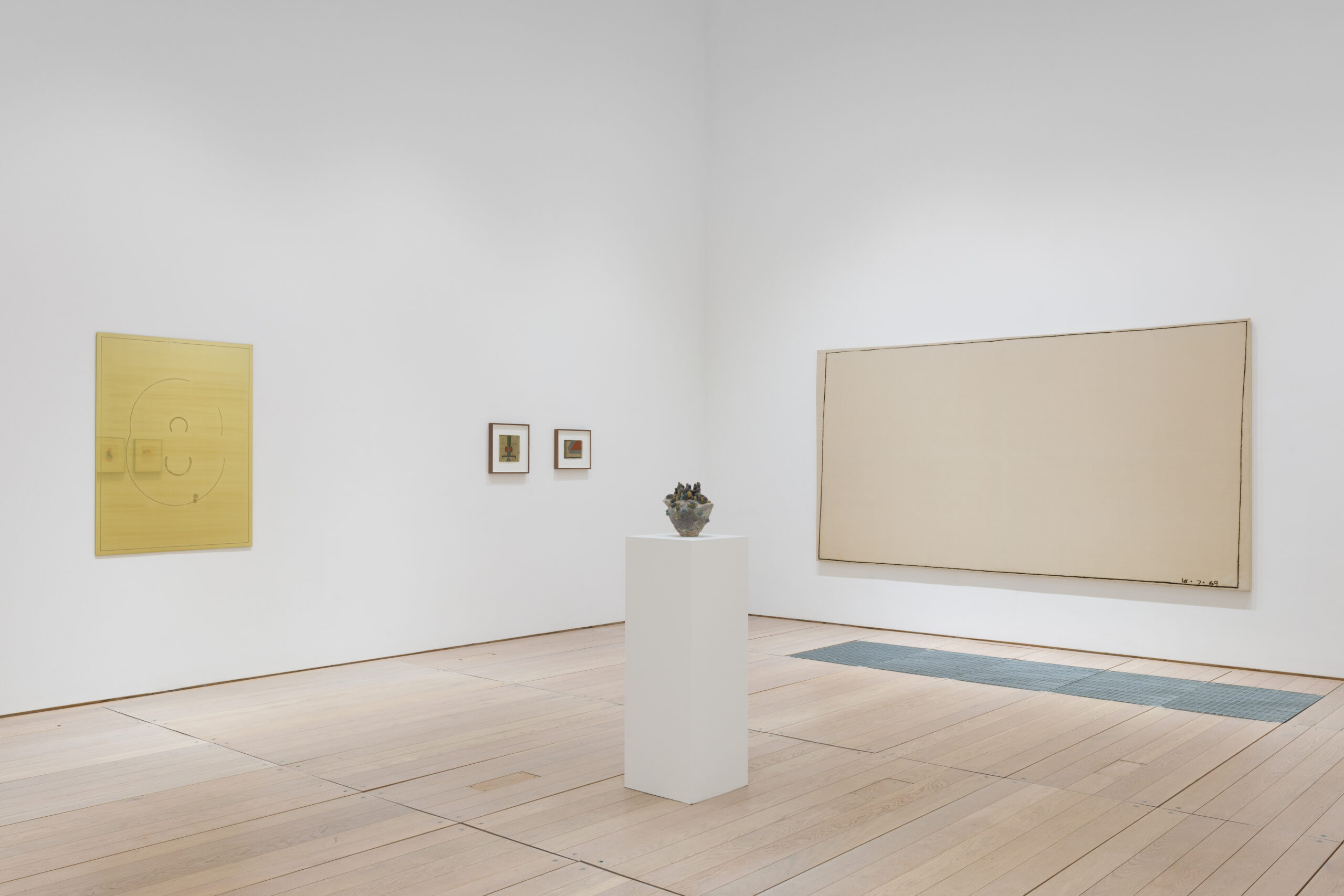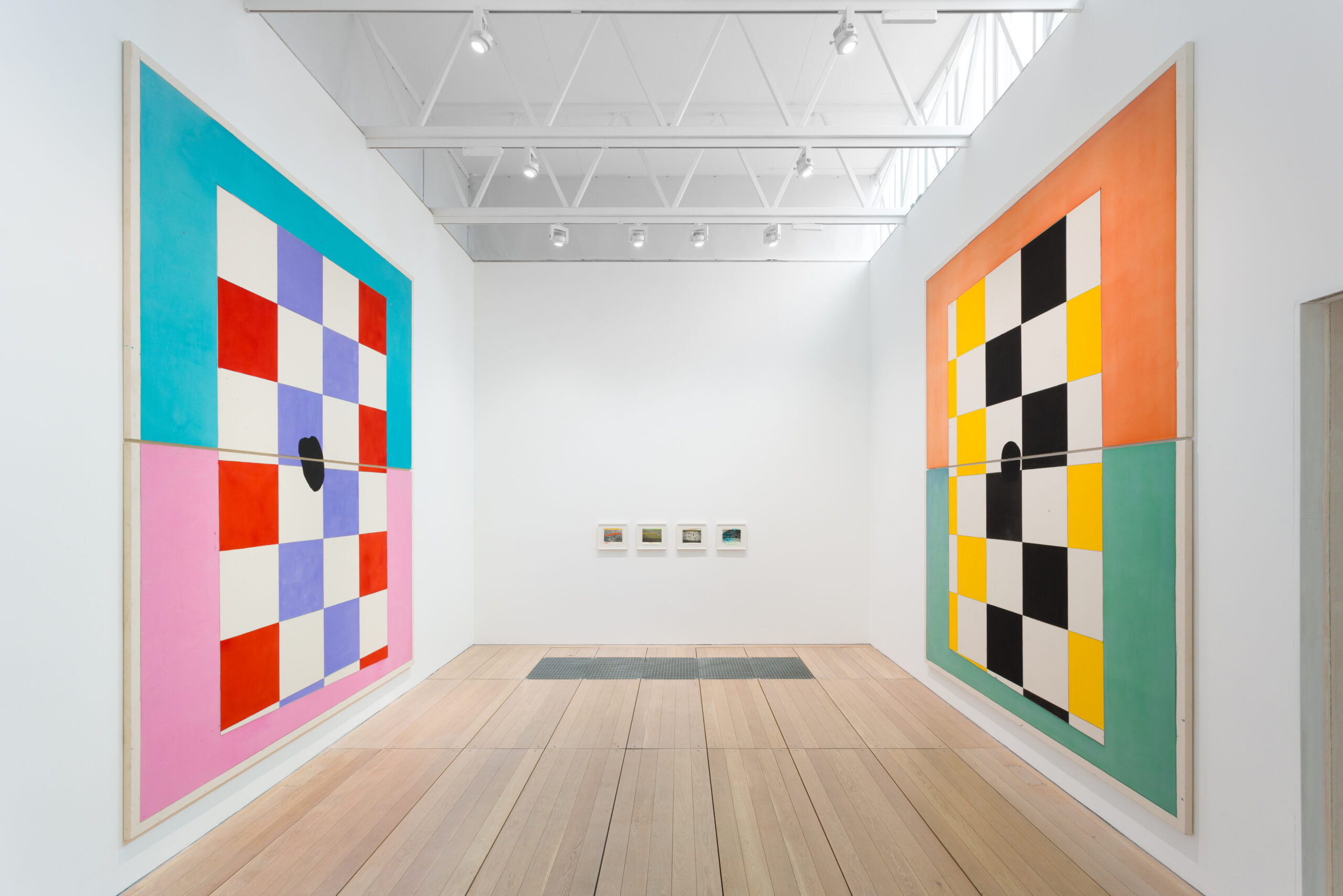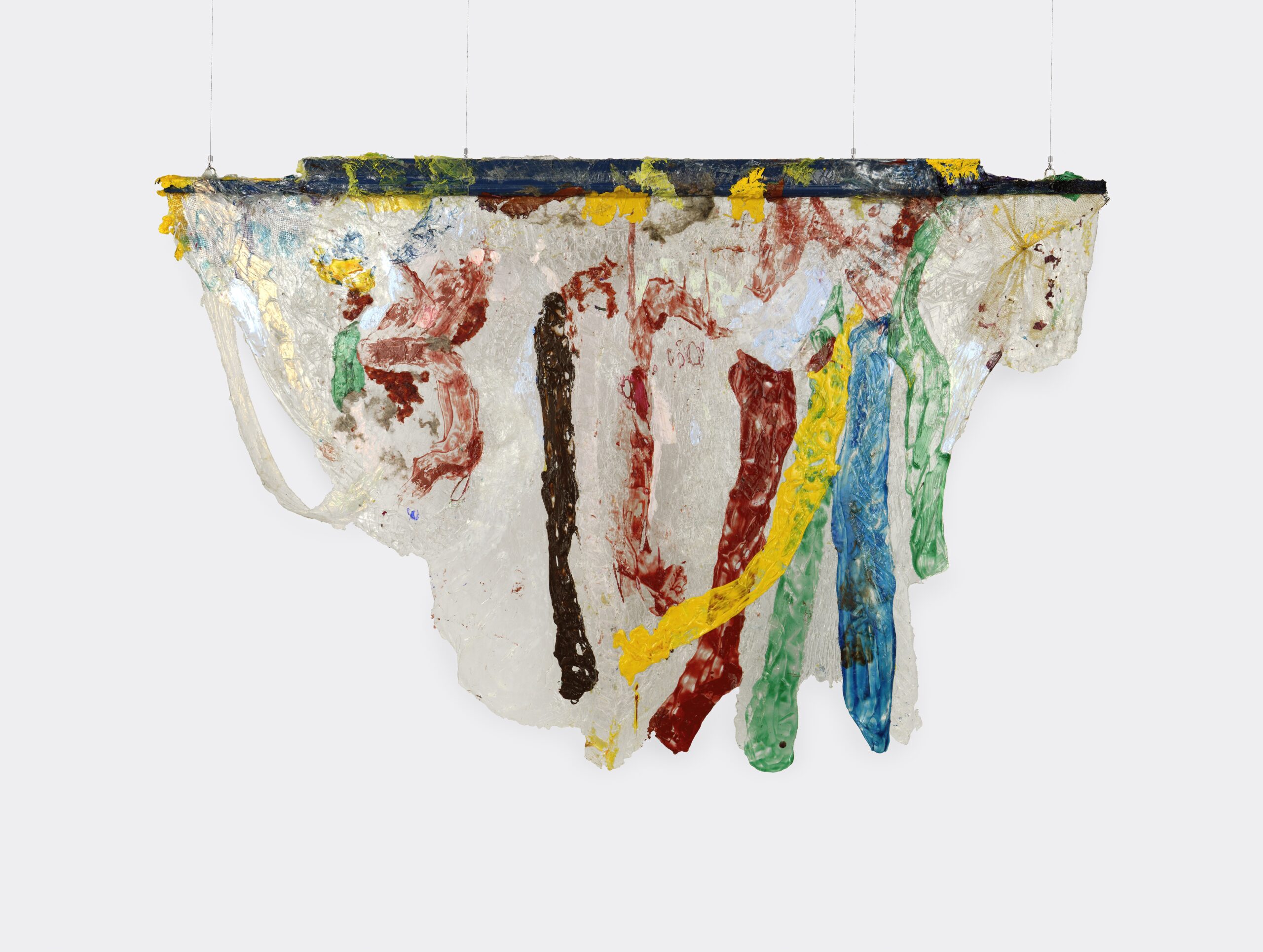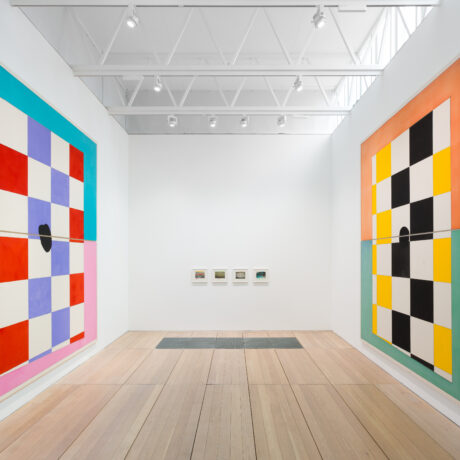
When I enter the first room of Finding Aid, an exhibition at Goldsmiths CCA curated by artist Matt Connors, I am told by an invigilator that there is a misprint on the exhibition guide. The numbers on the list of artworks are one behind those on the corresponding map. A pitiful orienteer at the best of times — I prefer it when the guide has little pictures to help me — I feel immediately out of my depth.
When the panic clears, I find myself faced with a large, almost empty canvas, which I later identify as Nothing to be afraid of I 16.7.69 (1969) by Bob Law. It is more than three metres wide and contains only a line crudely tracing its edge and a date in the bottom right. Facing it, Invert (2017) by Connors himself comprises a brass plate etched with an equally sparse arrangement, a sort of bulbous figure of eight. In an interview, Connors described Law’s work as a “fuck you” piece, a title that I think equally applies to Invert. Both promise something grand — one with its scale and the other with its medium — and fail to deliver it. They teasingly trace lines around a centre that turns out to be empty.
Before moving on to the next room, I congratulate myself for noticing a link between the two artworks. Maybe what I lack in map-reading skills is made up for in connoisseurship. Anyone who has visited an exhibition with a loudly discerning partner will know that a key element of understanding art is noticing and, importantly, vocalising connections like this one. Appreciating art is like playing a detective, figuring out how each work is related to its co-conspirators. Curators often talk about two pieces being “in conversation”, as though they are whispering behind our backs about something we should know.
Attunement to these conversations can border on paranoia. In the next room, two more of Connors’ works dominate; Mural for a Gay Household I and II (both 2018-2020) are vertical diptychs immaculately painted with checkerboard patterns, each disrupted by a single black mark. Almost immediately, I turn to their neighbours, four overpainted photographs by Masahisa Fukase, looking for a relationship between the two groupings. The fact that they were created almost thirty years apart and on different continents is not on my mind. What is the subject of their conversation — interruption, obstruction, leakage? — and why am I excluded from it? There’s no feeling worse than a room falling silent as soon as you walk in.

I wonder whether Connors is in on the gallery-wide conspiracy that I suspect is taking place around me. It makes sense to imagine him, the curator, presiding over the conversations taking place between each work, like a silent speaker in the house. But I prefer to think that he has as little control as I do, that he is seeing his work pulled into a hidden back-and-forth that quickly spins out of his control.
The protagonist of Vladimir Nabokov’s short story Symbols and Signs suffers from a case of referential mania, an ailment that causes him to imagine that “everything happening around him is a veiled reference to his personality and existence.” In this distorted reality, “everything is a cypher and of everything he is the theme.” This is how I think of Connors. In the galleries of Goldsmiths CCA, he has created a monster: a pictorial world where nothing is meaningless or random, and everything is in cahoots, and it all links back to him. Visiting the show, I have become bound up in the web of references.
This, of course, is a total fantasy. I’m not really worried about artworks engaging in dialogues that I’m not privy to, and I’m sure that Connors isn’t either. However, like all caricatures, it’s founded in reality. It is tempting to traipse around a show like this one, attempting to map out its connective tissue, but this approach might leave you blind to the particularities of what you are looking at. It is better enjoyed as a collection of objects and impressions that float with little conscious sense of design or determinism. Sometimes they might converge in satisfyingly clear ways, sometimes they might do so in more obscure ways. Sometimes, they might not at all.

I am thinking about this idea, flotsam and jetsam, when I see Suzanne Jackson’s sculpture Tilt Colour Smash (2022) hanging from the ceiling. It is a collection of vaguely recognisable shapes arranged into an organic-looking form and encased in clear acrylic. I’m not sure exactly what I am looking at, and I am not scanning the room for another artwork that might shed some light on it, but I like it. I like the colours, I like the way that its translucency allows light to shine through it, and I like how the D-rings that it hangs on poke their heads out from the chaos below them. These aren’t shiningly perceptive points that link the work to the gestalt of the whole exhibition; that kind of talk was the old me.
By a minor miracle, I find the artwork’s details on my now crumpled and sweat-stained map, learning that it is composed of laundry lint and metal roofing, among other things. Clearly, Jackson knows her way around a pile of detritus — how to bring a disjointed set of objects together into something that is pleasing in an immediate and simple way.

Without relapsing back into referential mania, I might suggest that Jackson’s work serves as an analogy. Like this exhibition and like the world, it is chaotic. There are lots of ways to try to understand it, but sometimes, understanding isn’t the goal. Attempting to comprehensively map out something as complicated as an exhibition, or even just an artwork, can be exhausting and fruitless. Sometimes, it’s best just to drift, to look, and maybe to think a little bit, but not too much.
Written by Phin Jennings
Matt Connors Finding Aid is on view at Goldsmiths CCA until 2 June 2024.
find out more





